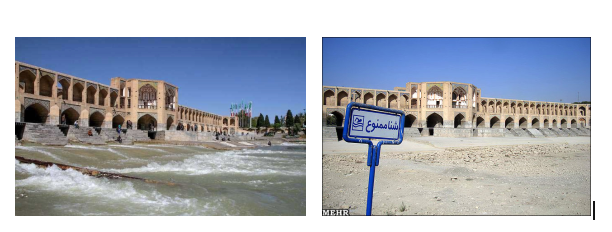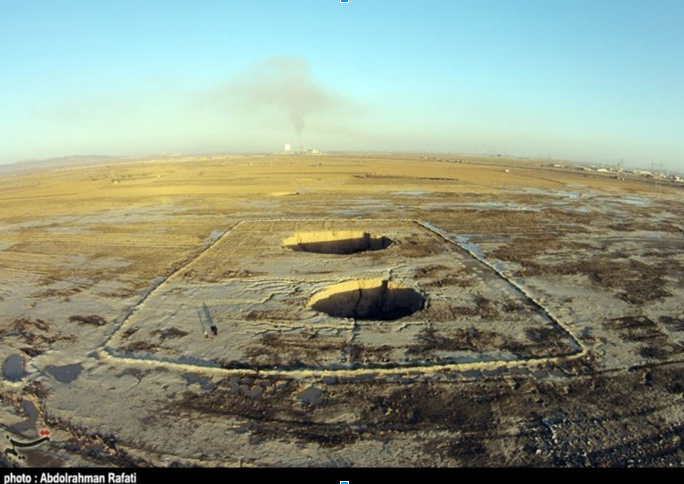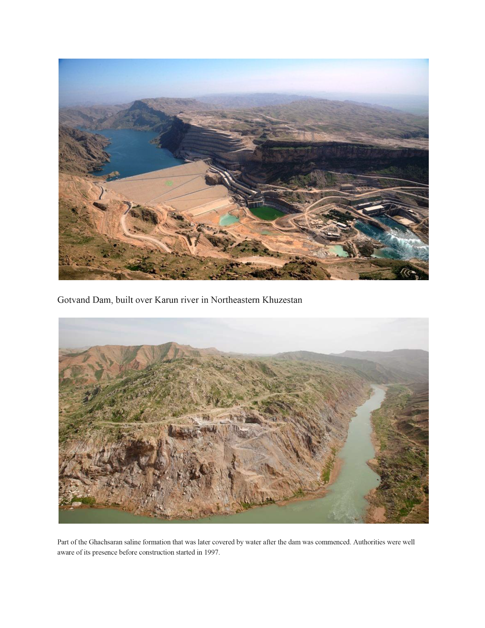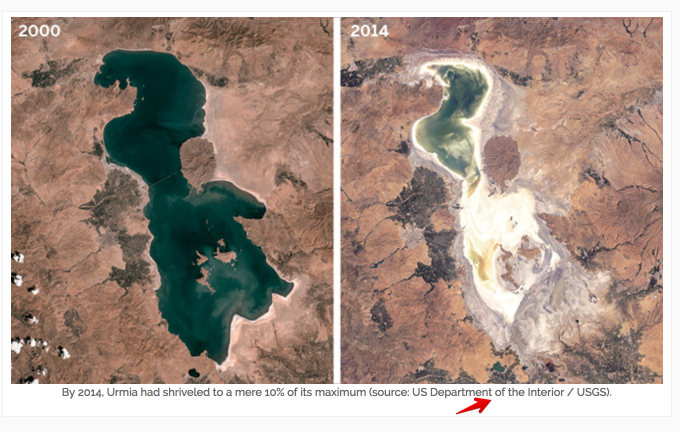The mullahs have turned Iran into a “Water-Bankrupt Nation”. The international community has no idea how to deal with the devastating impacts of Iran’s water crisis, nor the impending environmental refugee disaster.
Most western political observers have rightly been concerned about the Islamic regime’s nuclear ambitions and its meddling in Middle Eastern affairs. The Ayatollahs’ atrocious record on human rights has been the main focus of media for nearly four decades. The Islamic Republic has used tyranny and bribes to gain political leverage and to sustain its existence. Unfortunately, another perilous problem that political observers have under-reported is the regime’s devastating record on conserving Iran’s natural resources and, specifically, its water management that is directing the country into an abyss. This will not only shatter the dreams of Iranians who want to bring democracy and prosperity to their homeland, but will have a devastating effect on regional and international politics for years to come.
Some would suggest that climate change is the main reason for the drought and crisis in the MENA region, but experts and some former regime officials have acknowledged inept water governance as the main reason for the gradual annihilation of my homeland.
Looking back, I still remember the beautiful sunsets of lake Urmia and the wonderful wildlife around wetlands and marshes in Khuzestan, Esfahan, Sistan, and Baluchistan. Today, most of these beautiful places are dead. I could never have imagined seeing thriving rivers like the Karun and Zayandeh Roud dried up. I could never have imagined all the powerful springs of Chahar Mahal and Bakhtiari would dry up and disappear.

The world-famous Khaju Bridge over the Zayandeh Roud River in Isfahan.
Since its founding, the Islamic Republic’s misguided water governance has slowly led to disaster. The clerical regime built hundreds of dams to supply water for farmlands, where 90 percent of Iran’s renewable water resources are used for irrigation. Interbasin water transfer projects have also destroyed many resources and killed springs, especially in the Bakhtiari region. Hundreds of dams have suffocated rivers that supplied water for aquifers, which, as a result, have collapsed and perished due to the excessive withdrawal of groundwater. Where irrigation networks connected to dams were not enough, rural residents started drilling deep wells, pumping water out of aquifers without recharging them.
Years ago, a member of Iran’s parliament stated that Pistachio farmers in the Rafsanjan area had consumed over $80 billion worth of water through the years for a profit of only $30 billion. No one in the government monitored and managed how the farmers consumed their water resources -- especially the regime’s most powerful godfather, Akbar Hashemi Rafsanjani, the late President of Iran and power broker who was born in the region.

Sinkholes created by collapsed aquifers.
Once the water crisis became intractable, many groundwater sources died, and millions of impacted farmers and herders were forced to leave their ancestral homes and lands. The appearance of sinkholes is a devastating sign that represents the death of farmlands. The regime has not been paying attention to the many warning signs, such as the depletion of aquifers, land subsidence, desertification and dust storms. Nor has the clerical regime recognized or is it prepared for the human catastrophe of the forced mass migration from tens of thousands of villages to the margins of Iran’s major cities.
The main force behind building the dams and transferring water from rivers is the Islamic Revolutionary Guards Corp (IRGC). Consulting firms propose new water projects without any environmental and social consensus, the Ministry of Energy approves them, and the main contracts go to IRGC’s construction firm, Khatam al-Anbia.
The IRGC’s water projects are not only wasteful, they can also be extremely damaging. At the Gotvand Dam in Khuzestan, the massive dam’s reservoir covered a well-known saline formation (Ghachsaran).

Gotvand Dam, built over the Karun River in Khuzestan.
Consequently, millions of tons of salt dissolved and partially mixed with the reservoir water. Hundreds of thousands of palm trees have died due to the subsequent increase of water salinity of the Karun River.
The clerical regime is also responsible for the gradual disappearance of many wetlands and lakes of Iran, such as Lake Urmia, which was once twice the size of Luxembourg. In the 1990s, the government decided not to ‘waste’ all the fresh water flowing into the salt lake and started constructing tens of dams for irrigation projects. The results have been catastrophic, as satellite images attest:

Lake Urmia, Iran. Iran’s largest salt lake. Left image taken in 2000. Right image taken in 2014.
What we are witnessing as Lake Urmia’s fate also happened to Aral Sea in the former Soviet Union. There, the government diverted river water that once flowed to the lake into farmlands instead. The partial death of the Aral Sea led to a vast ecological disaster when the toxic residue of pesticides, chemicals and fertilizers from the dried lake sediments swirled in the air through dust storms, causing numerous respiratory diseases such as tuberculosis, cancer, and lung disease. Today, wind-blown salt storms from Lake Urmia are impacting the lives of millions of Iranians living around the lake, who now must breathe the salty and toxic air.
The continuation of the destruction of our lands will lead to a major environmental refugee crisis. Two years ago, the regime’s former minister of agriculture stated that “Approximately 50 million people, 70% of Iranians, will have no choice but to leave the country.”
As concerned patriots, it is our obligation to reach out to international institutions and thinkers, finding ways and means to save Iran from utter destruction. I would encourage them to think more about the possibilities of the next major refugee crisis; one that is much more complicated than the recent Syrian refugee problem. We continue to witness the lack of readiness of the international community to deal with the million refugees leaving Syria who crossed into Europe’s borders.
Because of the inhumane policies of the Islamic Republic’s rulers, millions of well-educated Iranian expatriates are unable to go back and help save their beloved country from disaster. The clerical regime has executed tens of thousands of innocent human beings within the country, but has also killed millions of trees, ruined over half of Iran’s fertile plains, and depleted most of the country’s critical aquifers.
This failed and corrupt political regime ruling Iran is destroying our homeland. We must put an end to this in order to save Iran for future generations.
